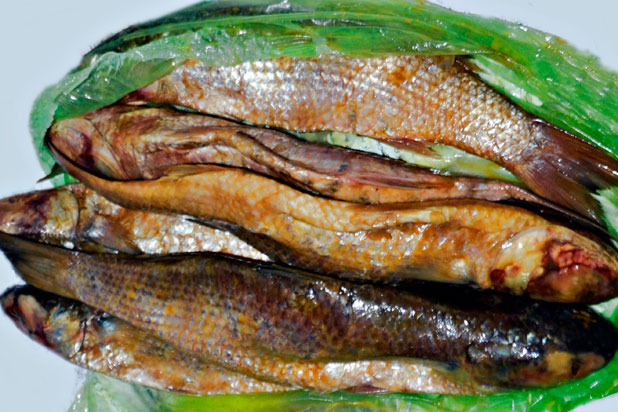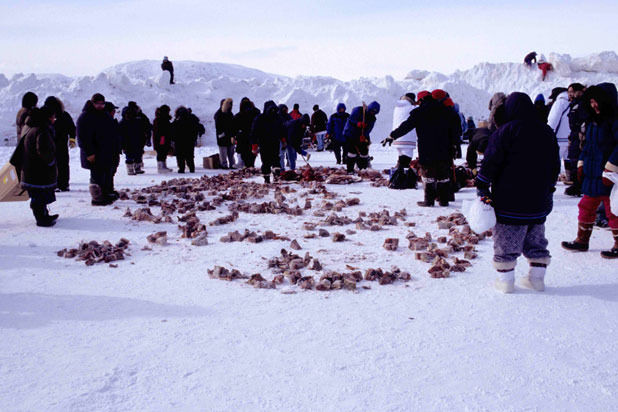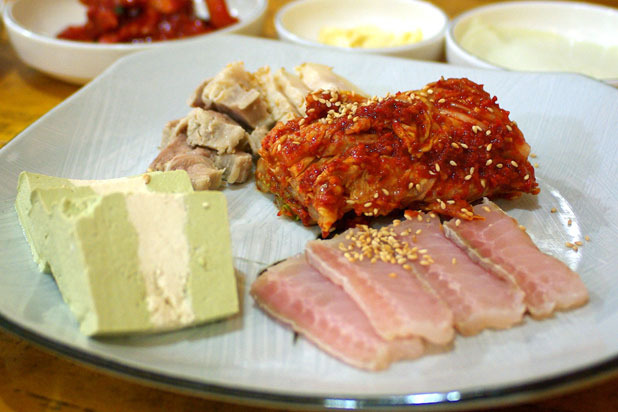10 Foods We Only Eat When They're Rotten (Slideshow)
To dry-age beef, slabs of it are allowed to sit in a temperature- and humidity-controlled room for up to three weeks while it develops a crust, usually complete with mold. All of this is cut away after the dry-aging is complete, however, and you're left with a steak that's tender, minerally, and more concentrated in flavor.
Miso
This Japanese staple is most commonly found in miso soup in the U.S., but is also used in sauces, spreads, and marinades. In order to make it, soybeans are left to ferment with salt and bacteria called Aspergillus oryzae. Barley, rice, and wheat are also sometimes added, and the resulting paste is a flavor-rich umami-bomb.
Kimchi
Kimchi is a hallmark of Korean cuisine, and it's made by slathering cabbages with a salty, spicy mixture, sealing it airtight in a jar, and letting it sit for a few days.
Cheese
Ask any cheesemaker, and they'll tell you that making cheese is the art of controlling rot. Milk is treated with bacteria and enzymes to curdle it, then the curds are cut, formed, and given some TLC for days, weeks, or months until the cheese is ripe.
Sauerkraut
Like kimchi, sauerkraut is also fermented cabbage. It's super-simple to make: shred cabbage, mix in salt, and let it all hang out for a while. Not only is it the best way to top a hot dog, it's also great for digestion.
Tempeh
Tempeh is a staple source of protein in its native Indonesia, and is a stand-in for meat all around the world. To produce it, whole soybeans are soaked, de-hulled, partially cooked, then mixed with vinegar and a little fermentation starter, then spread out and left to ferment for a day or two. A byproduct of the fermentation process is mycelium, a sticky fungus that binds it all together.
Hákarl
One of the most divisive foods on the planet, hákarl is, essentially, rotten shark, and it's a delicacy in Icelend. To make it, a gutted basking shark is placed in a hole of gravelly sand. The whole thing is covered with sand and heavy stones to weigh it down and remove fluids, and it's left in the ground for 6-12 weeks. After that's it's dug up, cut into strips and left hanging in a room for several additional months before being sliced up and eaten. The ammonia-smelling, super fishy-tasting end product is what Anthony Bourdain called "the single worst, most disgusting and terrible tasting thing" he's ever eaten.
Fesikh
A popular dish during Egypt's Sham-el-Nessim festival, this ancient dish is made by drying mullet in the sun before preserving it in salt. Recipes are passed down between generations, and it's not an easy one to get right: fesikh poisonings are common.
Igunaq
Every wonder how the Inuit preserve their meat? They cut it up (usually walrus or other marine mammals) into huge steaks, bury it in the ground for months (allowing it to ferment during autumn and freeze over the winter) and then eat it. A valuable delicacy, igunaq recipes are also passed down from generation to generation, and also can result in botulism if not properly prepared.
Stinkheads
A native Alaskan delicacy, stinkheads are unfortunately just what they sound like: King salmon heads are either buried in fermentation pits in the ground or put into barrels or plastic bags and simply left alone for weeks at a time. The resulting product is mashed up and eaten. The less said about it, the better.









